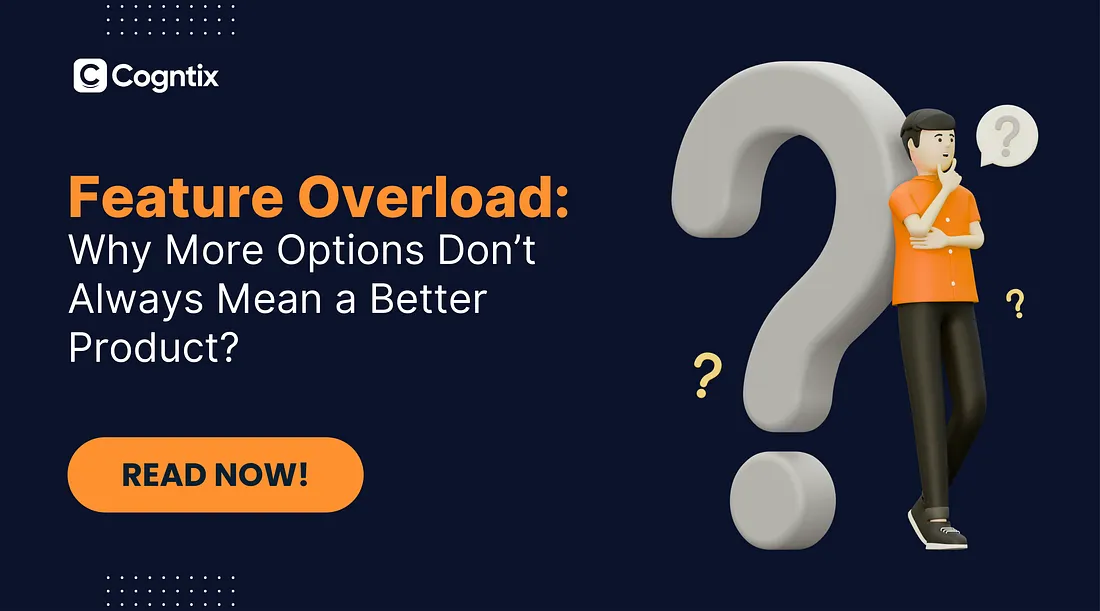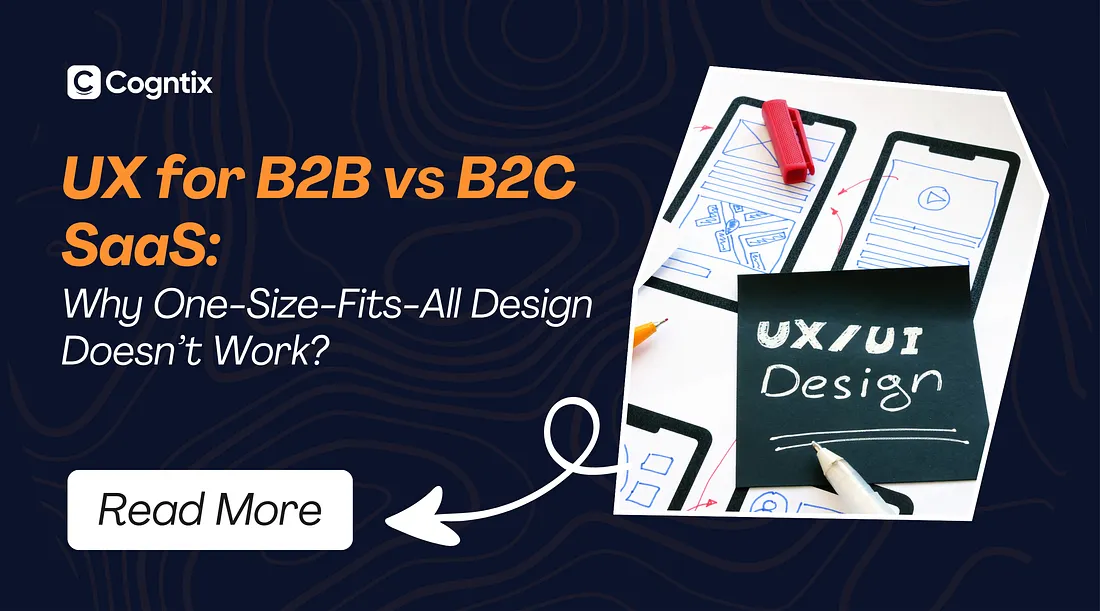More features should make a product better, right? Not always. We’ve seen it firsthand, companies come to us with products that have every possible function users might need, yet those same users struggle to navigate the interface, abandon key workflows, or never explore half the features built for them.
At Cogntix, we work with companies across SaaS, mobile apps, and enterprise platforms, and one of the biggest mistakes we see is feature overload. The intention is good, giving users more power, but the reality is often a bloated, confusing, and frustrating experience. Let’s talk about why this happens and how we help businesses fix it.
When Too Many Features Make Things Harder?
We once worked with a SaaS company that had a CRM tool loaded with customization options, reporting dashboards, and integrations. It looked powerful on paper, but customer retention was dropping. New users felt overwhelmed, the UI was overcomplicated, and teams spent more time figuring out the system than actually using it.
This isn’t an isolated case. The same pattern plays out in:
SaaS platforms that offer endless settings but lack clear user guidance.
E-commerce stores that add too many product filters, making decisions harder.
Enterprise tools that pack in features but bury core workflows under unnecessary layers.
More frustration, less engagement, and lower adoption rates.
Why More Features Don’t Always Mean More Value?
A product with hundreds of features doesn’t guarantee success. In fact, it can backfire by:
Users struggle to understand the core value of the product.
Too many choices make decisions harder.
Users need to be able to accomplish tasks quickly, not get lost in settings.
More features often mean slower load times, more bugs, and cluttered interfaces.
Many companies realize this only after launch, when engagement drops and support tickets increase. But by then, fixing it isn’t easy. That’s where we step in.
How We Help Clients Simplify Without Losing Functionality?
At Cogntix, our job isn’t just to build features, it’s to design experiences that keep users engaged and productive. Here’s how we do it:
1. Identifying Core User Needs (Not Just Wants)
Companies often add features based on internal assumptions or competitor comparisons, rather than real user behavior. We help teams:
Conduct user research to find what features actually drive value.
Identify underused features that add complexity without impact.
Prioritize development based on customer pain points, not just ideas.
For example, a fintech platform had 12 different reporting dashboards. Users were only actively using 3. We simplified the interface by surfacing the most relevant reports and hiding the rest until needed.
2. Designing for Clarity, Not Just Functionality
A great product isn’t just about what it does, it’s about how easily users can do it. We focus on:
Reducing unnecessary menus, settings, and distractions.
Showing advanced features only when users need them.
Helping users navigate without confusion.
Example: We worked with an enterprise HR software that had an overwhelming settings page. By breaking it down into step-by-step sections, completion rates improved by 40%.
3. Keeping Things Fast as Your Business Grows
Adding features without optimizing backend performance can slow an app down. We focus on:
Streamline database queries to keep apps fast even as functionality grows.
Optimize front-end rendering so interfaces stay responsive.
Ensure scalability so future features don’t create bottlenecks.
Example: A logistics app we worked on was struggling with slow load times due to excessive map features. We optimized data retrieval and caching, cutting response times by 50%.
Less Is More, If Done Right
A product doesn’t need endless features to be powerful, it needs the right features, designed in the right way. When businesses try to do too much, they risk overwhelming users, slowing down workflows, and reducing engagement. The best products are the ones that feel effortless to use, guiding users naturally to what they need without unnecessary complexity.
At Cogntix, we don’t just build software, we refine it. We help businesses cut through the noise, focus on what truly matters, and create experiences that users actually enjoy. If your product feels bloated, complicated, or underutilized, let’s fix it.
Let’s build something simple, smart, and scalable. Contact Cogntix today. We help businesses:
Written by: Gayathri Priya Krishnaram (Digital Content Writer at Cogntix)




